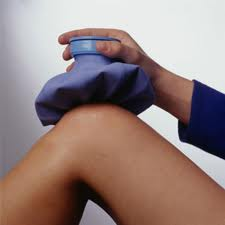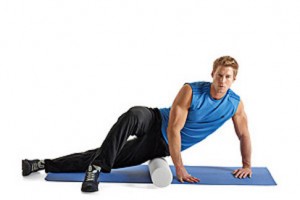Knees are the most commonly injured joints in the body. Considering that when you simply walk up stairs, the pressure across your knee joints is four times your body weight, it isn’t surprising. Simple, everyday wear and tear can end up hurting your mobility and then add to that your intense training.
It’s a vicious cycle…. your workouts seem to cause knee pain so you sit down; inactivity causes pain so you stay down. Your knees stay sore, you get weaker and you lose strength and balance. You get sized up for a walker and a wheel chair…
Well, that may be a little dramatic, but I’ve talked to so many people that become sedentary due to an ache or a pain.
Tell me, if your knee aches, what’s wrong with the rest of your body? Why can’t you just train around it?
Training an injured or strained body part is called ‘physical therapy’…. there’s a ton you can do to get yourself back on track and training intensely again.
Today’s focus is on the knees. This is a common area of concern for many.
Side note: I want to emphasize that squats, weighted or not, when done properly will not damage the knees. Lunges, when done properly, will not damage the knees. Generally, it’s a trauma that will cause knee damage initially and then these exercises may aggravate it. Or, possibly chronic over use and over training may be the culprit, but I never like to pin pain specifically on squats (my all time favorite ‘go to’ leg exercise).
Having said this, I still strongly believe in working around pain, modifying exercises possibly by reducing range of motion. You should always be working in a pain free range.
Let’s discuss what pain is appropriate. When you feel pain in the joint, it’s not a good sign. Pain in the muscle belly, bilaterally (on both sides of the body) is a good thing. Learning to listen to your body’s cues is imperative.
Here are a few strategies and exercises to work on if and when the knees act up:
Ice – After your training, whether you feel pain or not, ice never hurts.
Modify – If anything aggravates the injury, back off load and range of motion. Joint pain is not good pain. There comes a point when doing a painful motion is counter-productive. You want to bring blood and healing to the area through some movement, but if the movement prevents healing, then it’s pointless.
For example, if you normally would squat 135 lbs and find that this is causing knee pain and you back off to 65 lbs and still feel your knees, you’re doing two things: first of all, you’re preventing healing, secondly, you’re not doing enough work to make strength gains.
You’re better off finding another movement (like the leg press) to work your legs until the squatting knee pain subsides.
Stationary bike – Biking is a good way to increase strength and range of motion. Make sure you have the right positioning of the legs. At the bottom of the pedal stroke, the bend in the knee should be 15 degrees. Start with 10 minutes and slowly increase your time.
Wall sit – This is a great movement for increasing quad strength when rehabbing knees.
Train in front of a mirror – This may sound vain, but the purpose of mirrors in gyms is to check form, not your bum…Ensure that your form is impeccable, make slight corrections and this may be the solution to your problem.
Lay the blame correctly – Often times knee pain is caused at the hip or the ankle if the knee has sustained no trauma. If you rolled your ankle or have tight hips or IT bands, address these issues and knee pain will most likely subside.
Roll – Use a foam roller, especially on the IT bands. This is super painful at first, suck it up and do it anyway. If you’re prone to tight IT bands, this is a necessary evil. By the way, if you’re unsure if your IT bands are causing your knee pain, rolling them won’t hurt them.
Stretch – Stretching quads, hams, adductors, abductors, (all the main movers) is important and shouldn’t be overlooked. I’m not a big fan of yoga, but there are a variety of yoga positions that can really help, perhaps a post for a later date, (and I’ll tell you my hot yoga experience that turned me off yoga for good…)
So, there you have it, good reason to continue with some kind of leg training even if you’re experiencing some knee pain.
Hey, and here’s a tip, my pal, Rick Kaselj has a program that will help you out if you want more in-depth information on dealing with your knee pain. I highly recommend it.













